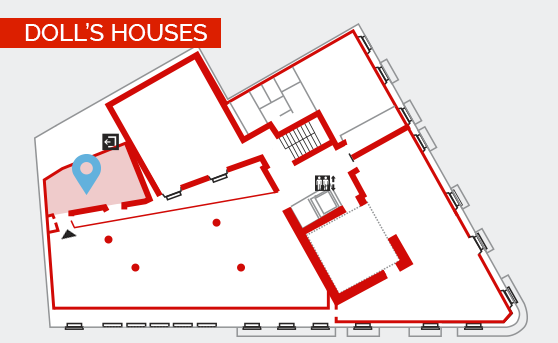
Descobreix el museu

DOLLS- HOUSES
Above and beyond being traditionally an entertainment for girls or a collectors’ item for adults, dolls’ houses show us a private world, reveal a lifestyle and exhibit social roles on the basis of the details we can explore in them, such as the different rooms, the elements that compose them, their different uses, their design or aesthetics and the equilibrium of these houses between the idyllic vision and the reality they hint at.
In ancient times, miniature houses made of baked clay constituted funerary offerings to accompany the soul of the deceased to their destination. Later on, dolls’ houses became collectors’ items, primarily in northern Europe, especially in Germany, the Netherlands and the United Kingdom. One of the first documented dolls’ houses dates from the 16th century, commissioned by Duke Albert of Bavaria for his daughter. From the mid-19th century onwards, dolls’ houses began to be addressed to girls for them to learn to run a home. But it was at the end of that century when they became popular thanks to mass production which permitted lower prices. This was the period when there evolved the idea that children could learn through play, and that the best way of training future housewives was by playing with a dolls’ house.
This area displays a selection of the Museum’s collection of dolls’ houses, along with a series of miniature teapots.












